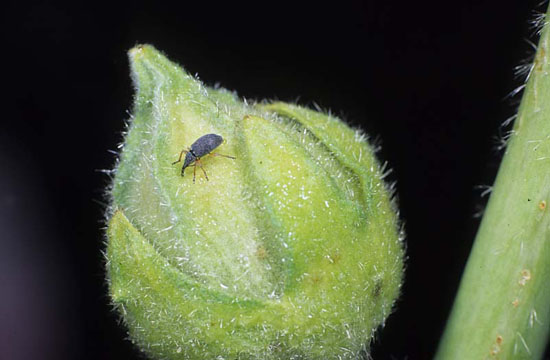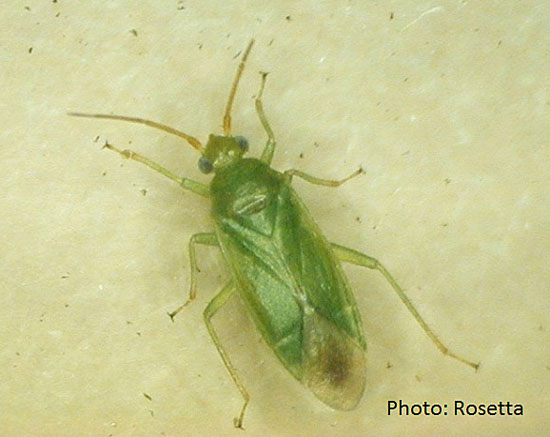Issue 12, July 16, 2012
Hollyhock Insects
Hollyhock weevil adults are slender, smooth, blackish, one-eighth inch long beetles with very long, obvious snouts. They eat one-eighth inch or larger, roundish holes in hollyhock leaves in mid-summer. The white, legless larvae grow to one-eighth inch long in the developing hollyhock seed pods, pupate there, and adults emerge through pinhead-sized holes that they eat in the seed pod. The reduced seed production caused by these weevils impairs the ability of this biennial flower to maintain itself through self-seeding. Carbaryl (Sevin), permethrin (Astro), and other labeled insecticides applied to the leaves reduces adult feeding damage and may allow increased seed production. Removing and destroying infested pods can keep the weevil population low enough to allow some seed production.

Hollyhock weevil adult on hollyhock bud.
Hollyhock plant bug adults are green, slender, and about one-eighth inch long. The nymphs are similar in color but smaller. Both nymphs and adults actively run on the stems and leaves when approached. They are sap-feeders, with feeding damage appearing as pinhead-sized, brown spots on the leaves. The leaf tissue of these brown spots common falls out, leaving tiny holes in the leaves. Overall, damage can cause the leaves to be lighter colored and slightly cupped with brownish areas. A single spraying of the leaves with insecticidal soap, summer spray oil, carbaryl (Sevin), permethrin (Astro), or other labeled insecticides should provide control.

Hollyhock plant bug adult.
(Phil Nixon)
Author:
Phil Nixon